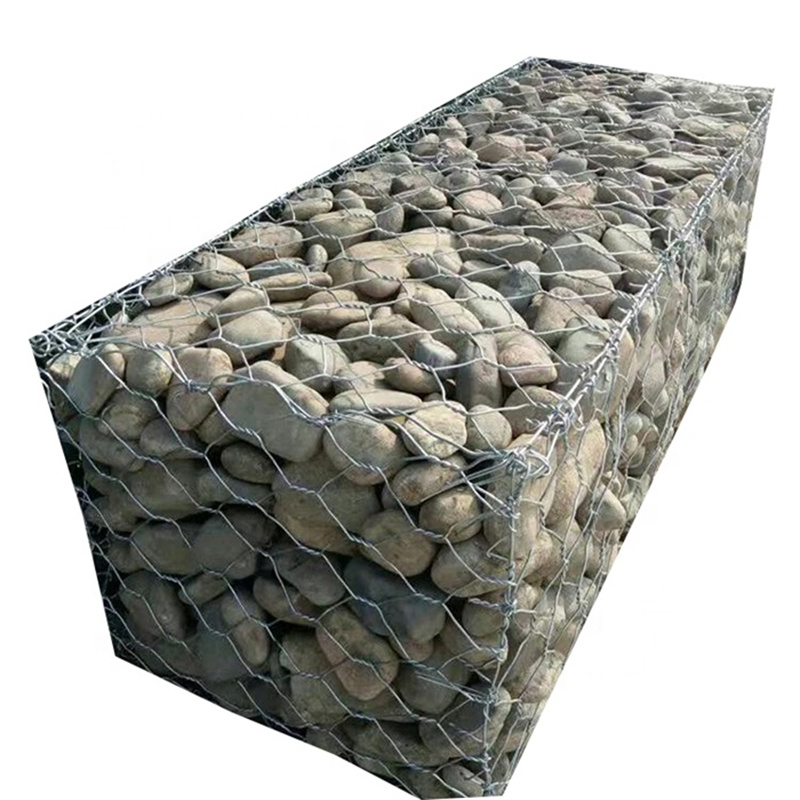Nov . 10, 2024 06:51 Back to list
Construction of Sandstone Gabion Walls for Sustainable Landscaping Solutions
The Benefits and Applications of Sandstone Gabion Walls
Gabion walls, constructed from wire mesh cages filled with various materials like stones, rock fragments, or in this case, sandstone, have gained significant popularity in civil engineering and landscaping projects. Sandstone, a sedimentary rock composed of sand-sized minerals or rock grains, offers both aesthetic appeal and functional benefits, making it an ideal material for gabion walls. This article will explore the advantages, applications, and construction techniques associated with sandstone gabion walls.
Visual Appeal
One of the key advantages of sandstone gabion walls is their visual appeal. Sandstone comes in a variety of colors, ranging from golden yellows to soft pinks and deep reds. This diversity in coloration allows for unique and personalized design options, enabling architects and landscape designers to create structures that blend harmoniously with the surrounding environment. These walls can serve as beautiful features in gardens, parks, and public spaces, enhancing the overall landscape aesthetic.
Environmental Benefits
Sandstone gabion walls offer notable environmental benefits. The use of natural stone reduces the need for manufactured materials, aligning with sustainable practices. Additionally, the open structure of gabions allows for water drainage and plant growth, minimizing erosion and promoting biodiversity. The porous nature of the wall ensures that water can flow through it, preventing hydrostatic pressure buildup behind the wall, which is a common failure point in traditional solid structures.
Structural Durability
Sandstone is a robust natural material that can withstand various weather conditions. When used in gabion walls, it provides durability and stability, essential for structures that need to retain soil and manage erosion effectively. Unlike concrete walls, which can crack or degrade over time, sandstone, encased in wire mesh cages, can flex and adapt to shifting soil conditions without losing its integrity. This flexibility makes sandstone gabion walls an excellent choice for areas prone to land movement or flooding.
sandstone gabion wall

Erosion Control
Gabion walls are commonly used for erosion control on riverbanks, slopes, and coastal areas. Sandstone-filled gabions can absorb wave energy, stabilize the soil, and protect against erosion caused by water flow. Additionally, the integrated design allows for vegetation to grow within and on the wall, further enhancing its ability to control erosion by establishing root systems that bind the soil together.
Construction Techniques
Constructing a sandstone gabion wall involves several steps. First, sites must be prepared and leveled. Next, the wire mesh cages—often made from galvanised steel for corrosion resistance—are assembled and placed in the desired location. Once the frames are set up, sandstone boulders or stones are filled into the cages, ensuring that they are compactly and evenly distributed. It’s crucial to maintain the height and structure of the wall by regularly checking alignment during construction. After all cages are filled and properly positioned, the gabion wall can be capped and finished with additional landscaping elements, such as plants and soil.
Cost-Effectiveness
Another advantage of sandstone gabion walls is their cost-effectiveness. While the initial investment in materials may seem significant, the long-term benefits of using natural stone and the reduced need for maintenance can offset these costs. Sandstone’s inherent strength and durability lead to lower repair and replacement expenses over time, making gabion walls a financially sound investment.
Conclusion
Sandstone gabion walls present an attractive and sustainable solution for various environmental and structural challenges. Their ability to blend aesthetics with functionality, alongside their role in erosion control and environmental preservation, makes them a desirable choice for many projects. Whether used in residential landscaping or large-scale civil engineering applications, sandstone gabion walls exemplify the synergy of nature and engineering, resulting in beautiful, durable, and environmentally friendly structures. As the demand for sustainable building practices continues to grow, the prominence of sandstone gabion walls is likely to increase, offering effective solutions for modern challenges.
-
The Role of Galvanized Gabion Mesh in Riverbank Protection
NewsJun.26,2025
-
The Role of Gabion Basket Raised Bed in Sustainable Gardening
NewsJun.26,2025
-
Quality Assurance of Wire Mesh Gabion Baskets
NewsJun.26,2025
-
Installation Guide for Welded Gabion Box
NewsJun.26,2025
-
How to Choose the Right Gabion Box
NewsJun.26,2025
-
Different Types of Gabion Wire Mesh
NewsJun.26,2025
-
Why PVC Coated Gabion Mattress Is the Best Solution for Long-Term Erosion Control
NewsMay.23,2025






